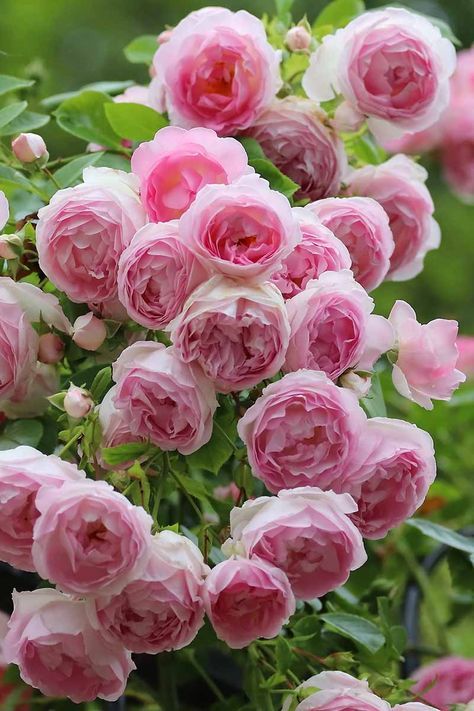A Rose by Any Other Name
go.ncsu.edu/readext?1064251
en Español / em Português
El inglés es el idioma de control de esta página. En la medida en que haya algún conflicto entre la traducción al inglés y la traducción, el inglés prevalece.
Al hacer clic en el enlace de traducción se activa un servicio de traducción gratuito para convertir la página al español. Al igual que con cualquier traducción por Internet, la conversión no es sensible al contexto y puede que no traduzca el texto en su significado original. NC State Extension no garantiza la exactitud del texto traducido. Por favor, tenga en cuenta que algunas aplicaciones y/o servicios pueden no funcionar como se espera cuando se traducen.
Português
Inglês é o idioma de controle desta página. Na medida que haja algum conflito entre o texto original em Inglês e a tradução, o Inglês prevalece.
Ao clicar no link de tradução, um serviço gratuito de tradução será ativado para converter a página para o Português. Como em qualquer tradução pela internet, a conversão não é sensivel ao contexto e pode não ocorrer a tradução para o significado orginal. O serviço de Extensão da Carolina do Norte (NC State Extension) não garante a exatidão do texto traduzido. Por favor, observe que algumas funções ou serviços podem não funcionar como esperado após a tradução.
English
English is the controlling language of this page. To the extent there is any conflict between the English text and the translation, English controls.
Clicking on the translation link activates a free translation service to convert the page to Spanish. As with any Internet translation, the conversion is not context-sensitive and may not translate the text to its original meaning. NC State Extension does not guarantee the accuracy of the translated text. Please note that some applications and/or services may not function as expected when translated.
Collapse ▲By Eleanor Moyer – Clay County Master Gardener Volunteer
I ran into my rose expert at the grocery last summer and asked about a problem my neighbor was having with her hybrid tea rose, only to have him reply that he no longer grew roses other than those easy-care landscape varieties like Knock Outs. He said bugs, disease, deer, and weather just made it too time consuming. I am using that as a disclaimer, but honestly, how can anyone not think roses worth the effort! Master Gardeners in Buncombe County have a good size rose garden to prove it (although it takes lots of consistent effort).
February is the best time to plant bare root roses and to do hard pruning. Roses need full sun and loose, rich, good draining soil. Space bushes about four feet apart to allow for air circulation. Grafted roses should be planted with the bud union slightly below soil line. Other than climbers and landscape roses, established roses should be pruned to about 18 to 24 inches leaving 3 to 6 main canes. Using sharp, clean tools and long gloves cut out all dead, dying and diseased branches. Cut out all crossing branches, then any stems smaller than a pencil. Make cuts at a 45º angle just above an outward facing bud. Your goal is sturdy canes shaped like an empty ice cream cone or an empty vase. Landscape roses (like Knock Outs) are much more resilient. They can be trimmed much like a hedge, but will benefit from a take down
of diseased and dead branches. My sister-in-law trims hers after each flush of flowers with great success, but you don’t really have to do anything.
All roses can be top dressed with compost, alfalfa meal and about 1/4 to 1/2 cup of Epsom salts. Once spring arrives, fertilize with a product formulated for roses. There are even ones available with both systemic fungicide and insecticide included. Continue to feed every 2 to 4 weeks depending on the product you are using. Stop feeding about 6 to 8 weeks before the first frost (October 21-31). Roses need a thorough soaking of water on a regular basis. Avoid overhead spraying except a good occasional dousing on a sunny, windy day to clean the leaves and dislodge any spider mites. Deadheading spent blooms deters rose hips from forming thus giving more energy to flower production. When cutting roses, go down from the flower to a 5 leaf stem with an outward facing bud for continued growth on strong stems.
To keep up with bugs and disease, be observant and consistent. Neem oil spray or insecticidal soap in the cool of the day is helpful. Liquid sevin thwarts Japanese beetles although my friend thinks roses act as magnets to them. Thrips are difficult to find so systemic products are more effective. Black spot and powdery mildew are the most prominent diseases to wreak havoc on roses. Make sure all old or diseased leaves are cleaned away from the plants. Horticultural oil will be a good place to start, but think you will need a good fungicide during the growing season. There are many available and you will have to keep at it, but one flower will make it all worthwhile.




